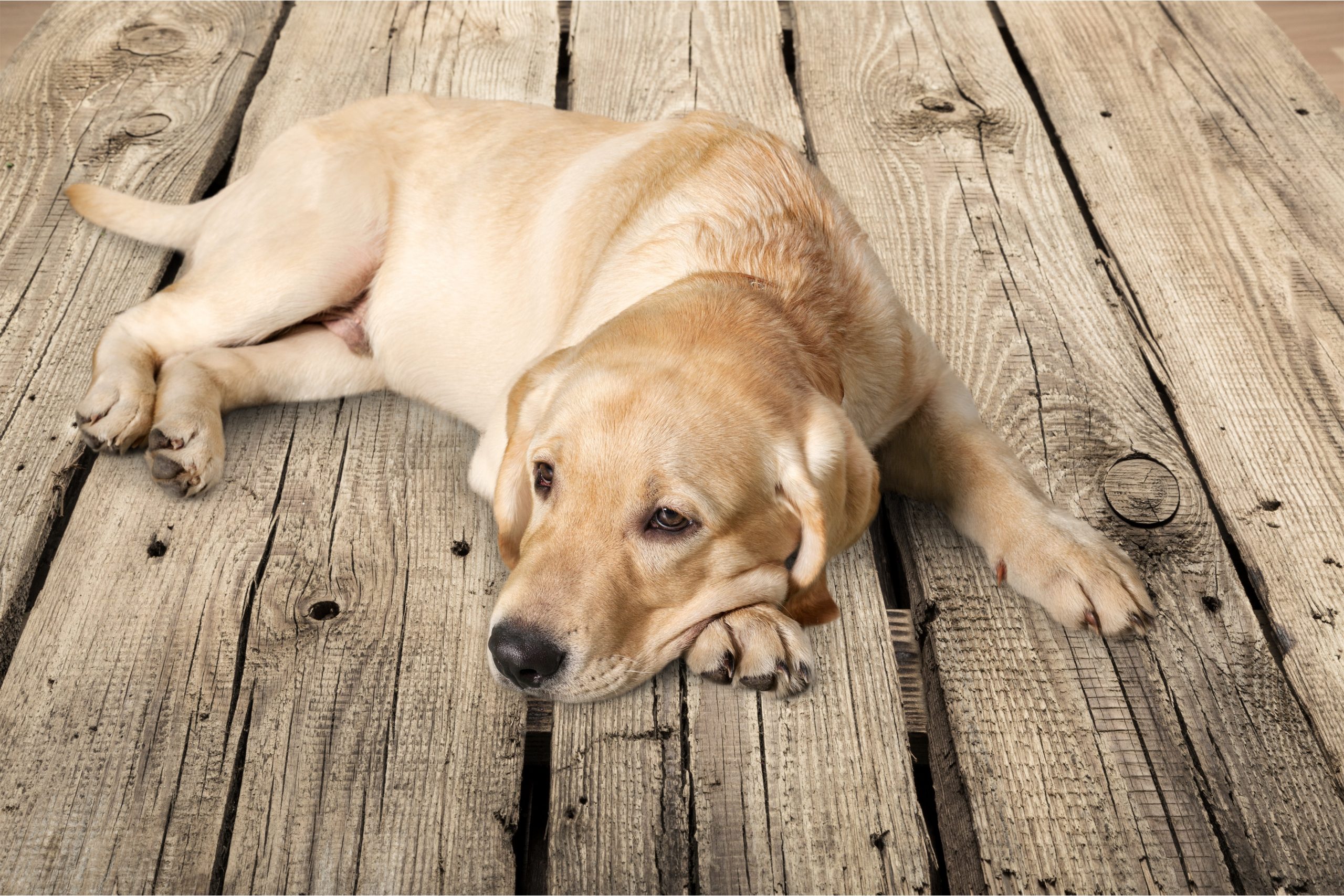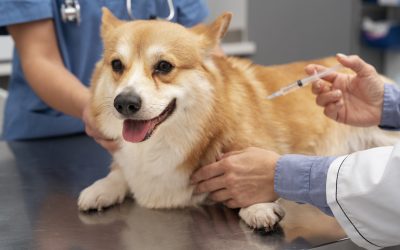Dog Tumors [Causes, Signs, Diagnosis, Treatment & More]

Introduction to Dog Tumors
As devoted pet owners, we understand the concern and uncertainty that arise when faced with the possibility of a tumor affecting our furry companions. In this article, we delve into the complexities of tumors in dogs, exploring the causes, signs, diagnosis, treatment, and prevention. Whether you’re seeking clarity on a recent diagnosis or simply want to be better prepared for any potential health issues, this guide aims to provide you with the knowledge and insight necessary to navigate this aspect of your dog’s well-being with confidence and understanding.
Understanding the Causes of Dog Tumors
Dog tumors can be caused by various factors, both genetic and environmental. Genetic predisposition plays a significant role in developing tumors in certain breeds (Boxers, Labradors, Golden Retrievers, and Staffordshire Bull Terriers). Environmental factors such as exposure to toxic substances, radiation, and certain chemicals can also contribute to the formation of tumors in dogs. Additionally, age, hormonal imbalances, and compromised immune systems can increase the risk of tumor development. It is essential to be aware of these causes to better understand the prevention and management of dog tumors.
Common Signs and Symptoms of Dog Tumors
Detecting tumors in dogs can be challenging as they cannot communicate their discomfort verbally. However, there are several signs and symptoms that dog owners can watch out for. These include the presence of lumps or bumps on the dog’s body, unusual swelling, changes in appetite, weight loss, difficulty breathing, and abnormal bleeding. It is important not to ignore these signs and seek veterinary attention promptly. Early detection can significantly improve the chances of successful treatment and recovery.
Diagnosing Dog Tumors: What to Expect
When a dog owner suspects the presence of a tumor, a veterinary examination is crucial for an accurate diagnosis. The veterinarian will perform a thorough physical examination, palpating the dog’s body for any abnormalities. Diagnostic tests such as blood work, X-rays, ultrasounds, and biopsies may be recommended to determine the nature, size, and location of the tumor. These tests help in formulating an appropriate treatment plan and prognosis for the affected dog. Here are some common questions that dog owners should consider asking during this critical phase:
- What specific tests are being recommended, and why? Understanding the purpose behind each diagnostic test can provide clarity on how they contribute to evaluating your dog’s condition.
- How should I prepare my dog for these tests? Knowing if there are any special instructions or precautions to take beforehand can help ensure the tests yield accurate results and minimize any discomfort for your pet.
- What are the potential risks or side effects associated with these tests? Being aware of any possible complications can empower you to make informed decisions about your dog’s care and well-being.
- How soon can we expect to receive the test results? Having a timeline for when you can anticipate receiving results can help alleviate anxiety and aid in planning the next steps of treatment.
- What do the test results indicate about my dog’s condition? Requesting a thorough explanation of the findings can aid in understanding the severity of the situation and guide discussions about treatment options.
- What are the available treatment options for my dog’s specific condition? Exploring the various treatment modalities, including medical management, surgery, radiation therapy, or chemotherapy, can assist in formulating a tailored treatment plan.
- What are the potential outcomes or prognoses for my dog? While this question can be daunting, having a realistic understanding of the prognosis can help you prepare emotionally and financially for the road ahead.
- Are there any lifestyle adjustments or supportive care measures that can benefit my dog? Inquiring about ways to enhance your dog’s quality of life, such as dietary modifications or pain management strategies, can be invaluable in promoting their well-being.
- Are there any further questions or concerns I should address? Open communication with your veterinarian can foster a collaborative approach to your dog’s care and ensure that all pertinent issues are addressed comprehensively.
Different Types of Dog Tumors and Their Characteristics
Dog tumors can manifest in various forms, each with its own characteristics and implications. Some common types of dog tumors include mast cell tumors, lipomas, mammary gland tumors, osteosarcomas, and hemangiosarcomas. Mast cell tumors are one of the most prevalent canine tumors, ranging from benign to malignant. Conversely, lipomas are typically benign fatty tumors that can be observed and monitored without immediate intervention. Understanding the different types of dog tumors and their characteristics is essential for making informed decisions regarding treatment and management.
Exploring the Types of Tumors That Can Occur in Dogs
Dog tumors can occur in different parts of the body, affecting various organs and tissues. Skin tumors, such as melanomas and squamous cell carcinomas, are commonly observed in dogs. These can be easily detected by visual inspection and should be promptly evaluated by a veterinarian. Internal tumors, such as those in the liver, spleen, or lungs, may present with vague symptoms and require advanced diagnostic techniques for accurate detection.
Treatment Options for Dog Tumors: Surgery, Radiation, and Chemotherapy
The treatment of dog tumors varies depending on factors such as tumor type, size, location, and overall health of the dog. Surgery is often the primary treatment option for localized tumors, aiming to remove the tumor completely. In some cases, radiation therapy may be recommended to target and destroy cancer cells. Chemotherapy, which involves the administration of drugs to kill cancer cells, is another treatment option. Combination therapies may also be employed for more aggressive tumors. The choice of treatment should be made in consultation with a veterinarian, considering the specific circumstances of the dog’s condition.
Managing Neoplasia in Dogs: Strategies for Improving Quality of Life
For dogs diagnosed with neoplasia or the presence of abnormal cell growth, managing their condition becomes a priority. Palliative care focuses on improving the quality of life for dogs with advanced tumors and may involve pain management, dietary adjustments, and complementary therapies. Regular veterinary check-ups and monitoring are crucial in assessing the progression of the tumor and adjusting the treatment plan accordingly. Additionally, providing a supportive and loving environment for the affected dog helps in promoting their overall well-being.
Spotting a Tumor on Your Dog’s Leg: What to Do Next
Discovering a tumor on your dog’s leg can be distressing. However, it is important not to panic and take immediate action. The first step is carefully examining the tumor, noting its size, shape, and associated symptoms. It is recommended to take photographs or videos of the tumor to document its appearance and changes over time. The next crucial step is to schedule a veterinary appointment for a comprehensive evaluation. The veterinarian will determine the nature of the tumor through diagnostic tests and guide you through the appropriate treatment options.
The Importance of Early Detection and Regular Check-ups for Dogs
Early detection of dog tumors is vital for successful treatment outcomes. Regular check-ups with a veterinarian are essential for monitoring the dog’s health and detecting any potential tumors at an early stage. During these check-ups, the veterinarian will perform a thorough examination, which may include palpation of the dog’s body for any lumps or abnormalities. Additionally, routine blood work and imaging tests may be recommended to identify any underlying issues. Timely intervention not only improves the chances of successful treatment but also ensures the well-being of the dog.
How to Prevent Tumors in Dogs: Tips for a Healthy Lifestyle
While it is not always possible to prevent dog tumors entirely, adopting a healthy lifestyle can reduce the risk and promote overall well-being. Providing a balanced diet, regular exercise, and proper grooming are essential for maintaining a healthy immune system. Avoiding exposure to toxic substances, such as pesticides and household chemicals, is also crucial. Regular veterinary check-ups and preventive measures, such as vaccinations and parasite control, further contribute to a healthy lifestyle for dogs. By implementing these practices, dog owners can take proactive steps toward minimizing the risk of tumors in their beloved pets.
Cost of Treating Tumors in Dogs
The cost of treating tumors in dogs can vary depending on several factors, including the type of tumor, the stage of the disease, and the chosen treatment options. Surgical procedures typically start at $500, while the cost of radiation therapy can vary between $2500 and $7000. Chemotherapy expenses range from several hundred dollars to several thousand dollars, and ongoing monitoring may result in significant additional costs. It is important for dog owners to be aware of the potential costs involved and to discuss financial considerations with the veterinarian.
How Can Pet Insurance Help You if Your Dog Has a Tumor?
Pet insurance can be a valuable tool in managing the costs of treating tumors in dogs and other veterinary expenses. By having a pet insurance policy in place, you can have peace of mind knowing that you can provide medical care for your furry companion without worrying about the financial burden. Pet insurance can help cover the costs of veterinary consultations, diagnostic tests, medications, and even specialized treatments if required and if the tumor was not diagnosed prior to the pet insurance policy’s effective date.
Reimbursement
This method is the most common for pet insurance companies. You pay out of pocket for the veterinarian bill, and then the insurance company reimburses you for what’s covered under the insurance plan. The steps look like this.
- You pay the vet bill after your dog’s visit.
- You fill out the pet insurance claim form.
- Submit the claim form and other required documentation to the insurer.
- After the claim is approved, you will be reimbursed for eligible expenses.
What Does Odie Pet Insurance Cover?
Pet insurance covers various veterinary expenses, providing financial protection and peace of mind for pet owners. Here are the details of the coverage options offered by Odie Pet Insurance:
Illness & Injury Plan
The Illness & Injury Plan is an all-inclusive insurance plan designed to cover a wide range of medical needs for your pet. This plan includes comprehensive coverage for various illnesses, injuries, and veterinary services. Some of the covered items include:
- Veterinary exams and consultations
- Diagnostics (e.g., X-rays, lab tests)
- Prescribed medications
- Surgeries and hospitalization
- Rehabilitation, acupuncture, or chiropractic treatments
- Medically necessary supplies
- Euthanasia and cremation
The Wellness Plan
The Wellness Plan is a monthly membership that focuses on preventive care and covers routine veterinary services.
- Provides reimbursements for routine care items such as wellness visits (exams and vaccines), testing and parasite prevention, dental cleanings and at-home dental care, vitamins, supplements, and more.
- Through Odie’s partnership with Petivity, a leader in smart pet products and proactive care, Wellness Plan members can also receive reimbursements for Petivity devices and health kits, as well as eligible Purina food and supplements.
- Total reimbursement up to $700 per year.




